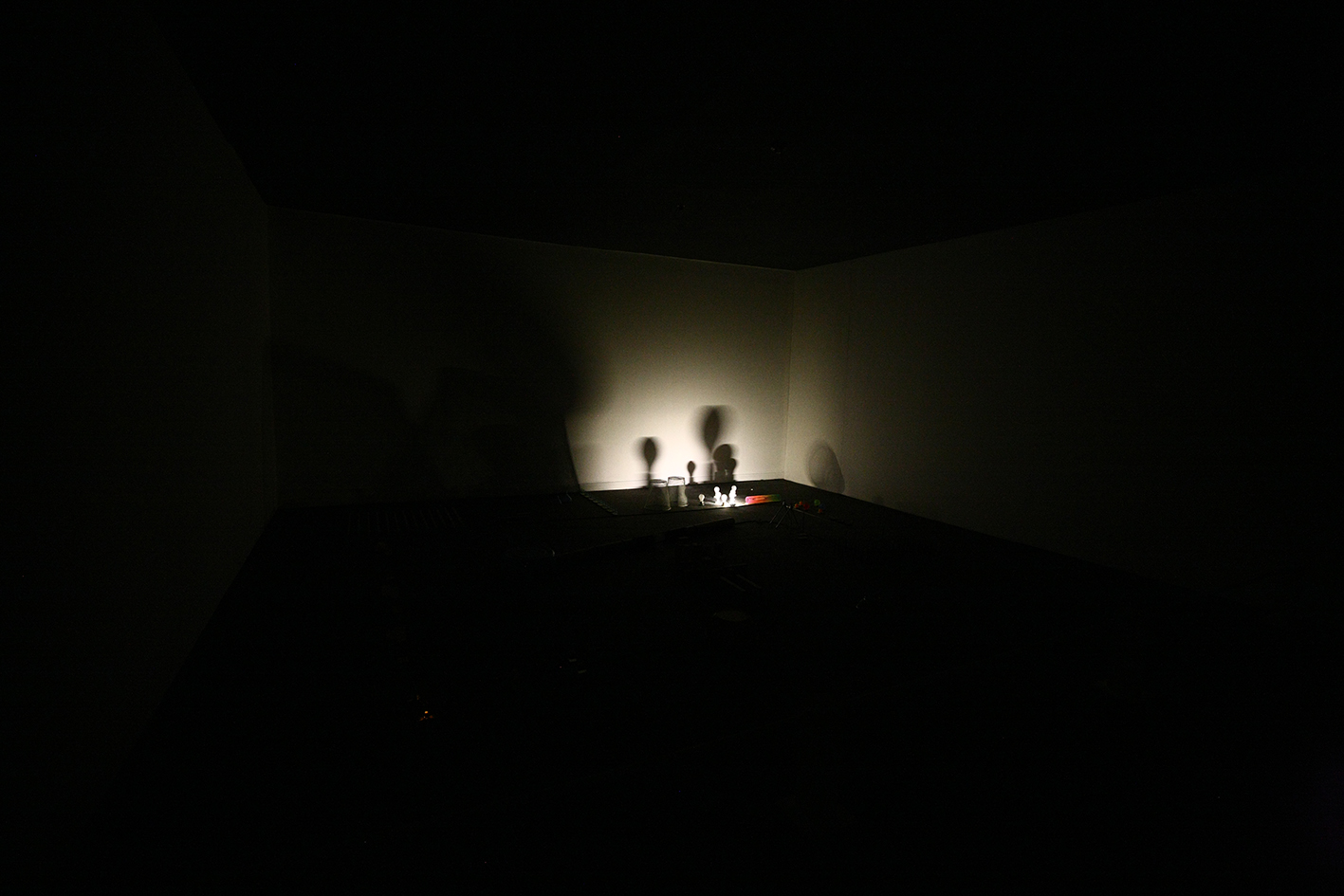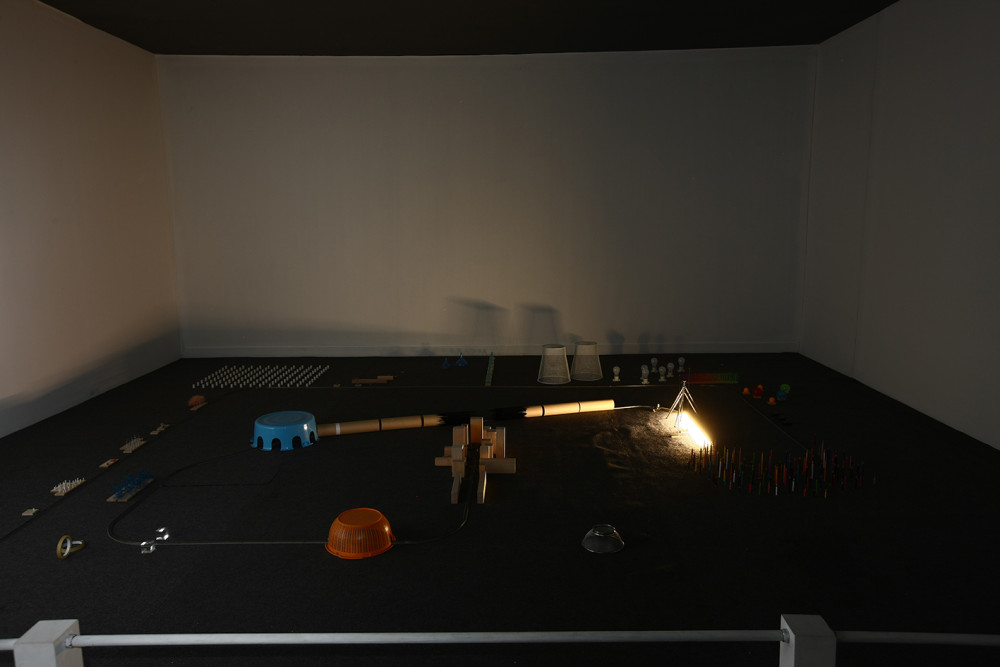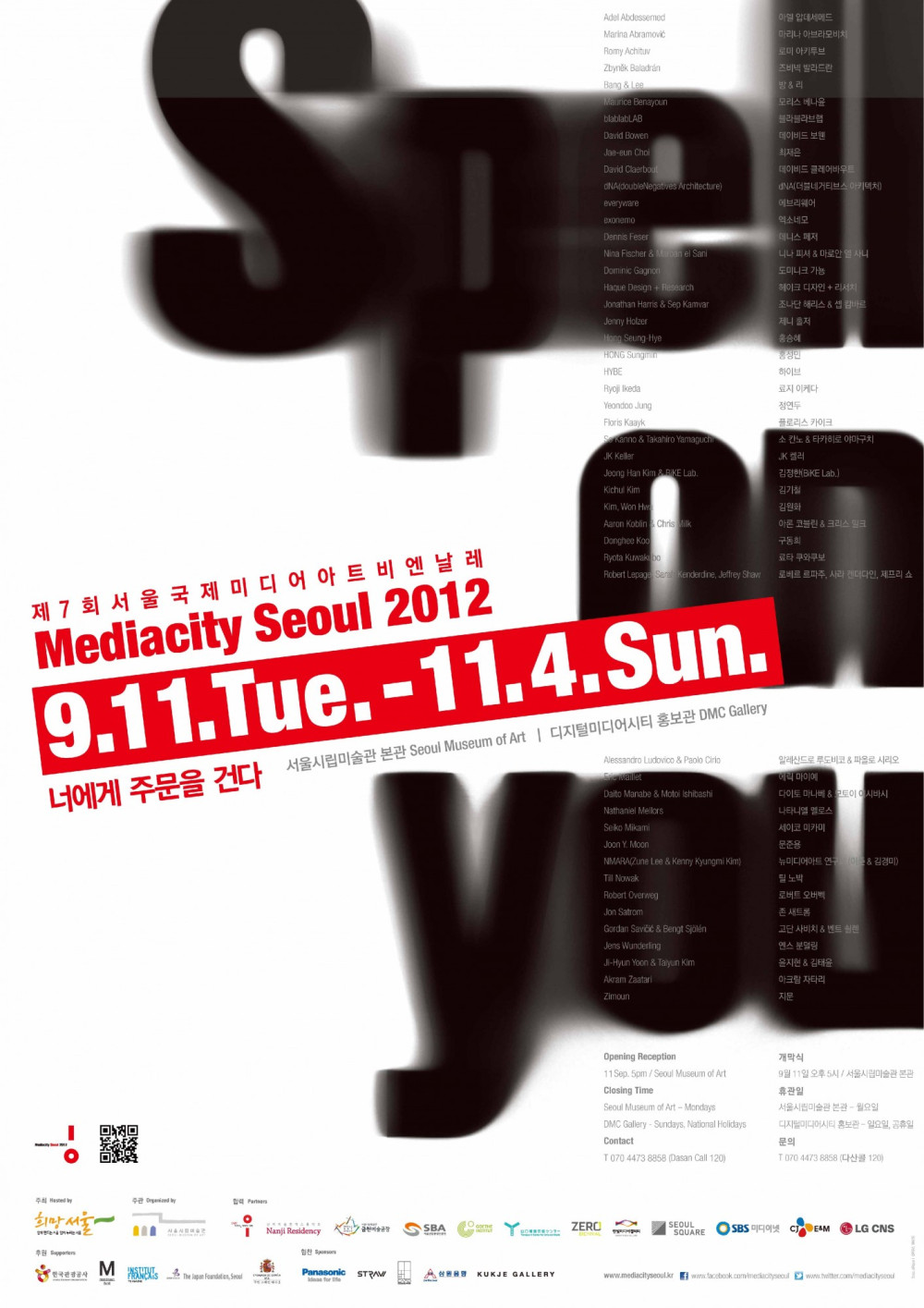
A miniature train carrying light slowly moves on a track leaving a linear trace of light in the dark. What serenely and dynamically emerge as a result are light and shadow filling up the entire space. Visitors captivated by the constantly changing scenes trace back the memories the silhouettes and images evoke.
In this fantastic world, everything is visibly constructed. All of the items installed such as pencils and baskets are miscellaneous objects bought at places like a one-dollar shop. The train traveling between the objects is the only object in motion which transforms the other objects into moving shadows. This work of art clearly distinguishes the tangible from the intangible, and the real from the virtual; although the two are stunningly aligned at the same time.
The Tenth Sentiment, in which light and shadow fill up the entire space, touches upon the history of imaging devices while also opening a new chapter. Along with immersion and magic images carry just like shadow plays, slide shows of the 17th century and movies (the moving axles on the railway would be interpreted to take the role of a projector), a perspective from distance also exists.
In short, an observer experiences the two layers simultaneously. The first is an introspective layer in which a person feels like being in a tram traveling along the space laid out from a luminous source, while the other one is an objective layer in which a person enjoys a drama depicted by images from the axis of the entire space or time. The two layers in The Tenth Sentiment co-exist in harmony. Ryota Kuwakubo has arrived at a natural, provocative image language by connecting point (a luminous source), line (railway) and dimension (walls).
° When literally translating 〈十番目の感傷(点・線・面)〉 into English, it is The Tenth Sentiment (Point-Line Dimension). At first, the Japanese pronunciation of point (a luminous source), line (railways) and dimension (walls) sounds like ‘Ten·Sen·Men’, which is similar to Tenth Sentiment in English. Finally, it was re-translated into Japanese 〈十番目の感傷(点・線・面)〉 as a title of this work.





